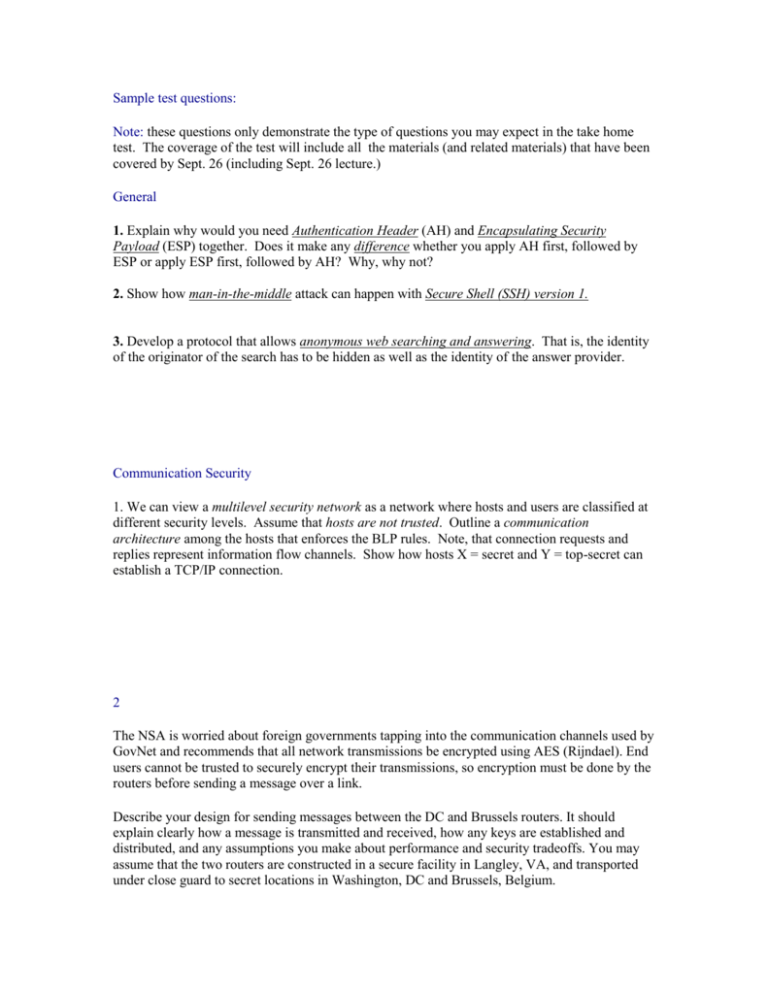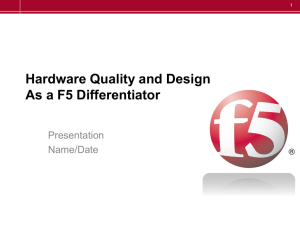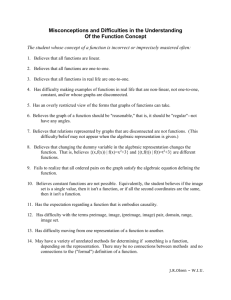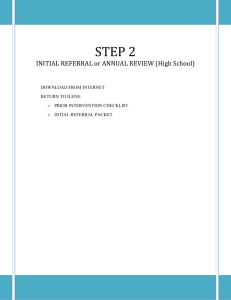Sample test questions:
advertisement

Sample test questions:
Note: these questions only demonstrate the type of questions you may expect in the take home
test. The coverage of the test will include all the materials (and related materials) that have been
covered by Sept. 26 (including Sept. 26 lecture.)
General
1. Explain why would you need Authentication Header (AH) and Encapsulating Security
Payload (ESP) together. Does it make any difference whether you apply AH first, followed by
ESP or apply ESP first, followed by AH? Why, why not?
2. Show how man-in-the-middle attack can happen with Secure Shell (SSH) version 1.
3. Develop a protocol that allows anonymous web searching and answering. That is, the identity
of the originator of the search has to be hidden as well as the identity of the answer provider.
Communication Security
1. We can view a multilevel security network as a network where hosts and users are classified at
different security levels. Assume that hosts are not trusted. Outline a communication
architecture among the hosts that enforces the BLP rules. Note, that connection requests and
replies represent information flow channels. Show how hosts X = secret and Y = top-secret can
establish a TCP/IP connection.
2
The NSA is worried about foreign governments tapping into the communication channels used by
GovNet and recommends that all network transmissions be encrypted using AES (Rijndael). End
users cannot be trusted to securely encrypt their transmissions, so encryption must be done by the
routers before sending a message over a link.
Describe your design for sending messages between the DC and Brussels routers. It should
explain clearly how a message is transmitted and received, how any keys are established and
distributed, and any assumptions you make about performance and security tradeoffs. You may
assume that the two routers are constructed in a secure facility in Langley, VA, and transported
under close guard to secret locations in Washington, DC and Brussels, Belgium.
All satellite transmissions, of course, can be intercepted. The NSA reminds you that it would be
unwise to transmit a large amount of data using the same key. The routers can store a few
kilobytes of information.
Assume that the routers are kept in physically secure locations guarded by trustworthy soldiers,
so there is no chance they could be compromised.
3
Agencies on the GovNet set up a gateway router that is connected over a land-line to one of the
master routers. For example, the Pentagon sets up a gateway connected to the DC router. You
may assume agencies join the GovNet infrequently, but need to do so with equipment they install
locally. (That is, the gateway router that is installed at the Pentagon should not come
preconfigured with any secrets stored on it, since it is vulnerable to tampering before it is
installed in a secure location.)
Describe the process for an agency to set up a gateway router for the GovNet. Explain clearly
how messages are transmitted between that gateway router and the master router. You should not
assume the land-line connection between the two routers can be protected from passive or active
eavesdropping.
4
Distributed authentication over different domains is a serious problem. If a user U wants to use
services of A, B, C, and D, each time U requests a new service he has to be authenticated by the
service provider (A, B, C, or D). This is very inconvenient for U as well as extra work for A, B,
C, and D.
Show how digital certificates can be used to simplify the authentication. Explain
functionalities of each components, prior registration requirements of U, A, B, C, and D, and
recommended content of the certificate.
Extend the above model such that U’s identity is not revealed to A, B, C, and D, however
there is a way that U can be billed for the requested services, i.e., provide anonymity for the
user.
5
Suppose that someone suggests the following way to confirm that the two of you have the same
secret key: you create a random bit string the length of the key, XOR it with the key and send the
result to the other party. Your partner XORs the received message using the secret key and sends
the result to you. If the result is the original random string, then you know that both of you have
the same secret key, yet neither of you ever transmitted the secret key. Is there a flaw in the
schema? (It is assumed that no transmission error occurs.)
6
Consider the following two protocols that use public-key encryption for communication between
two parties. ID-S and ID-R are the identifications of S and R, KE-S and KE-R are the public
keys of S and R, EK represent encryption with key K, and M is the plain text message.
Protocol 1:
1. S sends R: (ID-S, EKE-R[M,ID-S], ID-R)
2. R acknowledges receipt by sending to S: (ID-R, EKE-S[M,ID-R], ID-S)
Protocol 2:
3. S sends R: (ID-S, EKE-R[M], ID-R)
4. R acknowledges receipt by sending to S: (ID-R, EKE-S[M], ID-S)
Although they are very similar, Protocol 2 is vulnerable to active attack that allows a malicious
user to decrypt previously sent messages. How?
Formal Protocol analysis:
1. Logic of authentication
In this problem you will apply a slight modification of the BAN Logic to the concrete
STS protocol discussed in Lecture 2. Assume p is a large prime, g is a generator modulo
p and all operations are performed modulo p.
Assume the BAN Logic with the following modifications:
o
o
o
Assume that the symbols P K Q and P K Q have the same meaning (P and Q share
a key K that can be used for both encryption or authentication).
Introduce a new construct DH(P, gx): gx is the Diffie-Hellman public-key of
principal P. In particular this means that P knows x.
Introduce a new deduction rule that we will call the DH rule:
P believes DH(P, gx), P believes DH(Q, gy)
P believes P K Q
where K = gxy
o
Introduce a new deduction rule that we will call the strong signature rule (SSR):
P believes PK Q, P sees {x}PK-1
P believes x
Now here is a description of the idealized STS protocol you are going to work with (here
K = gxy):
5.
A -> B: DH(A, gx)
6. B -> A: DH(B, gy), {DH(B, gy), gx} PB-1
7.
A -> B: {DH(A, gx), gy} PA-1
We want to prove that
A believes A K B (Goal 1)
and
B believes A K B (Goal 2)
starting with the following assumptions:
A believes fresh(gx)
B believes fresh(gy)
A believes DH(A, gx)
A believes PB B
h.
B believes DH(B, gy)
B believes PA A
Prove formally the goals (1) and (2) of the protocol. Show all your deduction steps.
i. Suppose we drop the SSR rule. Can you still prove the two goals? If not, can you
identify a flaw in the STS protocol that corresponds to the use of the SSR rule?
What fix to the original, concrete form of the STS protocol could you suggest
that would fix the flaw?
2. Models of authentication
To show a correspondence between different models of authentication protocols, give an
encoding of the Dolev-Yao algebraic model of computation for name-stamp protocols
(Section III of their paper) in terms of the Abadi-Tuttle state-machine model of
computation (Section 5 of their paper).






